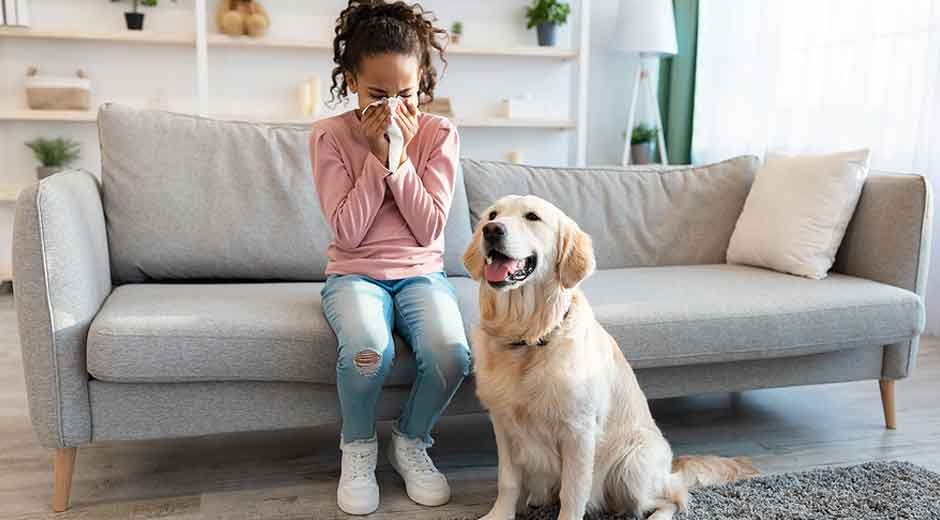Caring for pets enriches our lives, but for many pet owners it also brings the challenge of managing allergies. Dander, saliva, and pet hair can trigger reactions ranging from mild sneezing to severe respiratory distress. Recognizing potential allergens and adopting targeted strategies can reduce symptoms and create a more comfortable environment for both you and your animal companions. This article provides practical, science-backed advice to help households maintain harmony between health and furry family members. From cleaning techniques to product choices, each recommendation is designed to minimize allergen exposure without sacrificing the bond you share with your pet.
Understanding Pet Allergies
Pet allergies are caused by proteins found in dander, saliva, and urine. When these microscopic particles become airborne, they can linger on surfaces, clothing, and furnishings. Symptoms may present as itchy eyes, nasal congestion, coughing, or skin irritation. It is important to differentiate between pet allergies and other environmental triggers such as pollen or dust mites. Consulting with an allergist can confirm the specific cause and guide you toward effective immunotherapy or over-the-counter remedies. Accurate diagnosis ensures that your interventions directly address the root of your discomfort.
Maintaining a Clean Home
A rigorous cleaning regimen is essential to keep allergen levels in check. Begin by:
- Vacuuming carpets and area rugs at least twice weekly using a HEPA-filter vacuum.
- Washing pet bedding, blankets, and soft toys in hot water weekly to remove dander.
- Dusting hard surfaces with microfiber cloths, which trap allergens more effectively than cotton.
- Investing in a HEPA air purifier for bedrooms and living areas to capture airborne particles.
Additionally, consider replacing heavy drapery with washable curtains or blinds. Smooth surfaces like hardwood or tile flooring are easier to clean than wall-to-wall carpeting. Establishing a no-pet zone in bedrooms can prevent allergen accumulation in the spaces where you rest and recover overnight.
Choosing Hypoallergenic Pet Products
Reducing exposure starts with selecting the right pet supplies. Many cats and dogs shed continuously, but specialty products can help manage dander and loose hair. Look for:
- Hypoallergenic shampoos and wipes formulated to neutralize pet allergens while moisturizing the skin.
- Low-dust or dust-free cat litter options coated to minimize airborne particles.
- Grooming tools with fine stainless steel teeth or rubber bristles to capture loose fur before it disperses.
By incorporating these items into your regular care routine, you decrease the amount of allergen buildup in your home. Remember to follow manufacturer guidelines to ensure efficacy and safety for your pet’s skin and coat.
Personal Protective Measures
Simple lifestyle adjustments can further minimize your allergen load. Wearing a disposable mask or cloth mask while cleaning or brushing pets can prevent inhalation of dander. Changing clothes immediately after extended pet interaction and washing exposed skin can reduce transfer of allergens to furniture and bedding. Use dedicated vacuum attachments to clean upholstery, and wash hands thoroughly after petting or feeding. Educating household members about designated pet-free zones and hygiene practices helps maintain consistency, especially in multi-pet homes or shared living spaces.
Role of Professional Services
Regular professional services play a pivotal role in allergy management by providing deep cleaning and specialized treatments. Many homeowners schedule periodic carpet steam cleaning to eliminate embedded allergens beyond the reach of a vacuum. Professional upholstery cleaning services use high-temperature and low-moisture techniques that effectively break down protein particles. Scheduling pet grooming in Encinitas or in a nearby city ensures targeted baths and de-shedding treatments that significantly reduce dandruff and loose hair. Grooming salons and mobile pet hygienists can also apply allergen-neutralizing sprays and complete ear and dental cleanings. Incorporating professional help complements your at-home efforts and maximizes overall effectiveness.
Conclusion
Managing allergy triggers in a pet household involves a multifaceted approach, combining regular cleaning, strategic product choices, personal protection habits, and professional interventions. Each step contributes to a healthier living environment where both pets and owners can thrive. Remember that consistency is key; small, daily actions stack up to create significant improvements in air quality and allergen load. By adopting these best practices, you build a sustainable routine that honors your pet’s place in the family and safeguards your own well-being. With patience and the right tools, you can enjoy the unconditional love of your furry companions without compromising on comfort or health.






